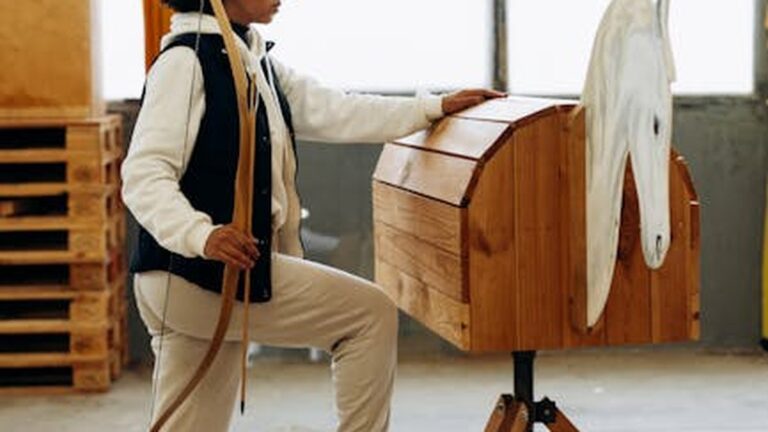Desk Stretches for Fall: Preventing Aches and Pains While Working From Home
Introduction: Fall Into Comfort and Productivity
As the leaves change and the weather cools, many of us are settling back into our home offices for the fall season. While working from home offers flexibility, it can also lead to increased aches and pains from prolonged sitting. Spending hours hunched over a desk can strain your neck, back, wrists, and more. But don’t worry! With a few simple desk stretches, you can combat these issues, improve your posture, and boost your overall well-being and productivity.
This guide will provide you with a series of easy-to-follow stretches you can incorporate into your workday to prevent discomfort and stay energized throughout the fall.
Why Desk Stretches are Essential for Remote Workers
Working from home often means less movement throughout the day. We might skip the walk to the office, the water cooler chats, or even just the change of scenery. This sedentary lifestyle can lead to:
- Muscle stiffness and tightness: Prolonged sitting restricts blood flow and causes muscles to shorten and tighten.
- Poor posture: Slouching over a desk can lead to chronic back and neck pain.
- Reduced energy levels: Lack of movement can make you feel sluggish and tired.
- Increased risk of injury: Repetitive movements and poor posture can increase the risk of carpal tunnel syndrome and other musculoskeletal problems.
By incorporating regular desk stretches into your routine, you can counteract these negative effects and maintain a healthier, more comfortable work environment.
Easy Desk Stretches to Combat Fall Aches
Neck Stretches
Neck pain is a common complaint among remote workers. These stretches will help relieve tension and improve flexibility.
- Neck Tilts: Gently tilt your head to the right, bringing your ear towards your shoulder. Hold for 15-20 seconds. Repeat on the left side.
- Chin Tucks: Gently tuck your chin towards your chest, as if making a double chin. Hold for 5-10 seconds. Repeat 10-15 times. This counteracts the forward head posture often associated with desk work.
- Neck Rotations: Slowly turn your head to the right, looking over your shoulder. Hold for 15-20 seconds. Repeat on the left side.
Shoulder Stretches
Tight shoulders can lead to headaches and upper back pain. These stretches will help open up your chest and improve your posture.
- Shoulder Rolls: Roll your shoulders forward in a circular motion for 10-15 seconds, then reverse the direction.
- Arm Circles: Extend your arms out to the sides and make small circles forward for 10-15 seconds, then reverse the direction.
- Across-the-Chest Stretch: Bring one arm across your chest and gently pull it closer to your body with your other hand. Hold for 15-20 seconds. Repeat on the other side.
Back Stretches
Back pain is another common problem for desk workers. These stretches will help relieve tension in your lower and upper back.
- Seated Spinal Twist: Sit tall in your chair and gently twist your torso to the right, placing your hands on the chair or desk for support. Hold for 15-20 seconds. Repeat on the left side.
- Cat-Cow Stretch (Seated Variation): While seated, arch your back like a cat, tucking your chin to your chest. Then, reverse the motion, arching your back and lifting your chest. Repeat 5-10 times.
- Forward Fold: From a seated position, slowly bend forward, reaching towards your toes (or as far as you can comfortably go). Hold for 15-20 seconds.
Wrist and Hand Stretches
Typing for long periods can strain your wrists and hands. These stretches will help prevent carpal tunnel syndrome and other wrist-related issues.
- Wrist Flexion Stretch: Extend your arm straight out in front of you, palm facing up. Use your other hand to gently bend your wrist down, pointing your fingers towards the floor. Hold for 15-20 seconds.
- Wrist Extension Stretch: Extend your arm straight out in front of you, palm facing down. Use your other hand to gently bend your wrist down, pointing your fingers towards the floor. Hold for 15-20 seconds.
- Finger Stretches: Make a fist, then slowly open your hand, spreading your fingers wide. Repeat 10-15 times.
Tips for Incorporating Desk Stretches into Your Routine
- Set reminders: Use a timer or app to remind you to stretch every 30-60 minutes.
- Make it a habit: Incorporate stretches into your daily routine, such as during your morning coffee break or after lunch.
- Listen to your body: Don’t force any stretches. If you feel pain, stop immediately.
- Adjust your workstation: Ensure your chair, desk, and monitor are properly adjusted to promote good posture.
- Take short breaks to walk around: Even a few minutes of walking can help improve circulation and reduce stiffness.
Conclusion: Stay Healthy and Productive This Fall
By incorporating these simple desk stretches into your daily routine, you can prevent aches and pains, improve your posture, and boost your overall well-being while working from home this fall. Remember to listen to your body, take regular breaks, and adjust your workstation to create a comfortable and healthy work environment. Stay active, stay comfortable, and stay productive!






